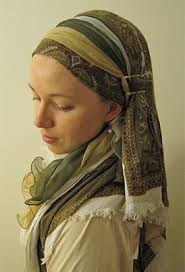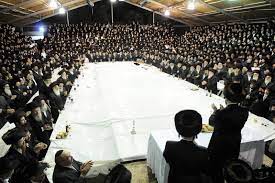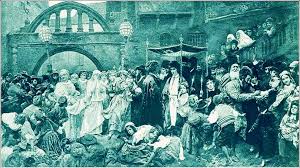Upon successful completion of this course, students will be able to: display a clear understanding of the phenomenon which began in the 20th century and has continued into the present day in which Jews who were completely unaffiliated with their religion have begun to return to Orthodox Judaism; identify factors that led to this phenomenon; when it began; the social impact it has had on the Jewish nation as a whole; identify which demographics have been most affected and which less so; identify which organizations have been involved with outreach in order to spur on this movement and their agenda; and describe the sociological role the land of Israel has played in impacting this movement, and the establishment of Israel as an independent state in 1948.

Upon successful completion of the learning experience students will be able to: demonstrate a proficiency and understanding of the processes involved in the raising of children in the traditional Jewish Society; the impact of education, disciplinary structure, social outlets, schooling, and accepted practices for children growing up and reaching maturity in the Orthodox Judaic world. Given the broad spectrum of practice within the Judaic world, this course intends to cover as many of the different ethnicities that exist in the various cultures of Jewish society. Students will also be able to take into account the historic perspectives which have influenced the upbringing of children in Jewish society; explore the origin of many practices which have emerged in modern times; understand the evolution of custom and law pertaining to children and adolescents in Jewish Society. The student is expected to have attained a thorough understanding of both the modern Jewish Child, and his counterpart from yesteryore who may have lived many centuries earlier in both theory and practice and understand clearly how to bridge that gap.

Upon successful completion of the learning experience, students will be able to: demonstrate a commanding knowledge of both the history and social significance of Jewish Cuisine throughout the ages; be aware of the primary Jewish sources which are replete with references to cuisine and its significance in both custom and law; demonstrate a distinct proficiency in being able to compare and contrast the potential impact of custom vs. law in the realm of Jewish Cuisine; identify the origin of many common practices involving the various victuals in modern Jewish society. The student will be expected to be capable of tracing the roots of many common practices that have cropped up over the years, and in contrast, identify which customs are societally no longer practiced and provide an explanation for these vicissitudes involving cuisine in the Jewish world.

Upon successful completion of this course (or proficiency examination), students will be able to: demonstrate a broad and in-depth knowledge of the role of Jewish women in medieval society in both Ashkenazic and Sephardic countries; describe the typical woman’s social and economic status, as well as religious activity, and explain differences based on place of residence; explain the approach of various scholars in the field and the social causes they suggest to explain some of the practices and decrees which were made during this time period; and draw conclusions about how Jewish women in the Middle Ages viewed themselves and how others saw them.

Upon successful completion of the learning experience, students will be able to: identify the primary norms and behaviors of modern chassidic Jews; compare and contrast Chassidic society to its non-Chassidic counterpart; compare and contrast Chassidic society to other religious minority groups; recognize behavioral patterns; clarify the goals and motivations driving the chassidic communities; describe the religious background to Chassidic life; generate hypotheses about the Chassidic Community based on focused research; identify the ways the Chassidim of Williamsburg have changed with time and familiarize themselves with essential terms and phrases used by the Chassidic Community.

Upon successful completion of the learning experience, students will be able to: Describe the fundamentally different view of women and marriage between Judaism and ancient Greece and Rome; explain how interpretation of the Biblical story of the creation of man led to fundamentally different views of marriage between Judaism and Christianity; explain the motivation for marriage in Judaism – divine commandment and ethical imperative; understand the nature of the marriage bond as viewed by the classical sources; identify the Biblical and Rabbinic sources for various prohibited marriages; identify the sources for the various traditional criteria for spouse selection; understand the foundation of love in marriage; compare and contrast the traditional Jewish view of love with that of the secular world; understand the division of roles and responsibilities in marriage; understand the nature of divorce in traditional Judaism.

Upon successful completion of the proficiency examination, students will be able to: identify and describe the concepts, terminology, and major figures in the field of sociology; detail the nature of the sociological inquiry, methods and perspectives; analyze the social behavior of people in other cultures; understand the process of socialization and how humans become social beings; examine various sides of controversial social issues; portray opposing positions on controversial social issues that affect the students’ own lives; analyze the different ways in which people act, feel, think and define their situations based on their sex, social class, age, ethnic group, geographical region, family or nationality; understand the issues of diversity and globalization and their impact on our lives.
Upon successful completion of this proficiency examination, students will be able to: define such concepts as assimilation, pluralism, ascribed and achieved statuses, prejudice and discrimination; display basic knowledge of historical, socioeconomic, and political demographics of the United States; demonstrate critical thinking about different theories and perspectives pertaining to race, class, and gender; and apply sociological concepts to the analysis of race and ethnicity to personal and/or family experience.
Upon successful completion of this proficiency examination, students will be able to: discuss the nature and severity of selected social problems facing society; identify the multiple causes and consequences of social problems; critically evaluate the effectiveness of various social welfare strategies to alleviate the causes and consequences of social problems; explain and critically evaluate studies on a number of pressing social problems; and cultivate a habit of reflecting upon and articulating their own engagement with the social world and grappling with causes and potential solutions to social problems.